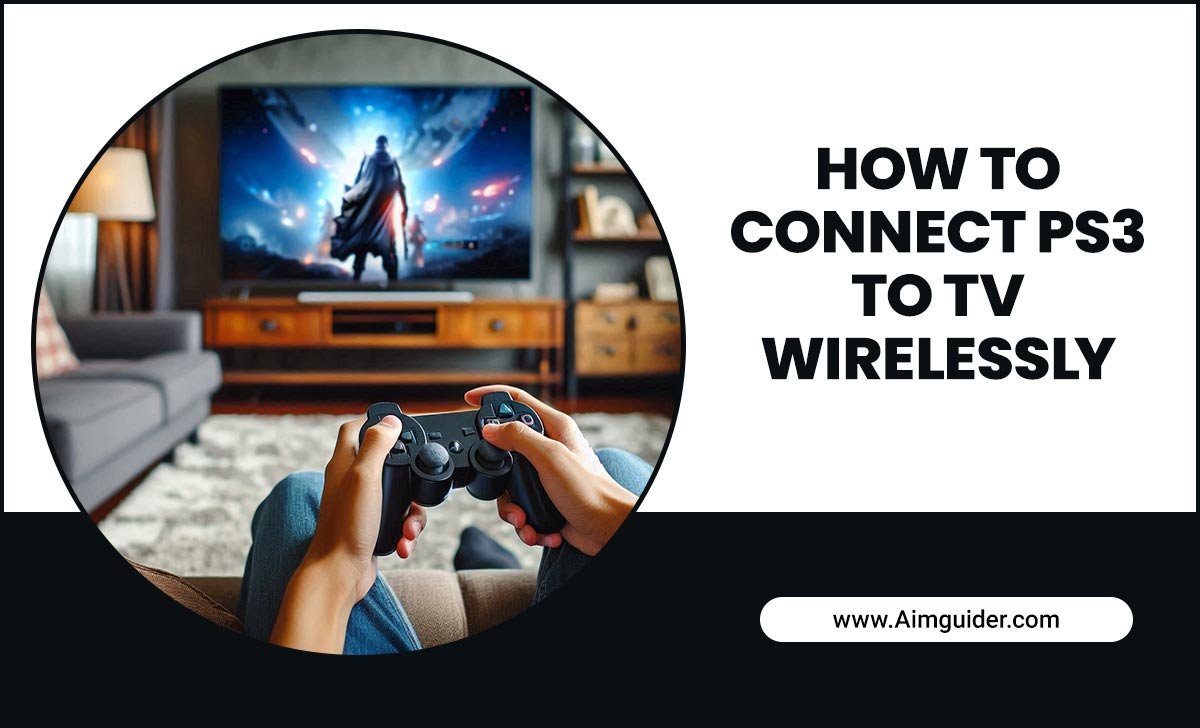Quick Summary:
Finding the best TV for a bright room on a budget is achievable! Look for TVs with high brightness (measured in nits) and good contrast, often found in LED or QLED models. Prioritize smart features, good viewing angles, and consider screen size based on your room. Focus on value, not just the lowest price, to get a TV that truly performs well in sunny spaces without breaking the bank.
Ah, the sunshine streaming in! It’s wonderful when you’re relaxing, but not so much when you’re trying to enjoy your favorite show or movie. Glare and washed-out pictures can turn a great viewing experience into a real frustration. You want a TV that cuts through the brightness, offering a clear and vibrant picture, but your wallet might be singing a different tune. It’s a common problem many of us face, and finding that perfect balance between a bright-room-friendly TV and a budget-friendly price tag can feel like searching for a needle in a haystack. But don’t worry! I’m here to guide you through it. We’ll break down what to look for, what to avoid, and uncover some fantastic options that deliver proven value, making your sunny living room a fantastic place to watch TV again.
Why Sunlight and TVs Don’t Always Mix
It’s a simple physics thing, really. Light bounces. When a bright room bombards your TV screen with ambient light, that light reflects off the screen’s surface. This reflection, known as glare or washout, makes it harder to see the picture clearly. Colors lose their pop, blacks turn into grays, and details get lost. Think of trying to read a book with a spotlight shining directly on it – it’s tough! The TV’s own light output has to fight against this external light, and if it’s not powerful enough, the external light wins, leaving you with a dim, uninspiring image.
Key Features to Look For in a Bright Room TV
So, what makes a TV a superhero in a sun-drenched room? It’s a combination of smart features that help it combat that pesky ambient light:
Brightness (Nits are Your Friend!)
This is arguably the most crucial factor. Brightness is typically measured in “nits.” The higher the number of nits, the brighter the TV can get. For a bright room, you’ll want a TV that can output at least 400-500 nits, with OLED TVs generally being less bright than their LED and QLED counterparts unless specifically designed for it. However, don’t just look at peak brightness; sustained brightness is also important for general viewing.
- What to aim for: 500 nits or higher is a good starting point for bright rooms.
- Why it matters: More nits mean the TV’s picture can overpower the ambient light, making images sharp and vivid.
Contrast Ratio and Black Levels
Contrast is the difference between the brightest white and the darkest black a TV can display. A high contrast ratio means deeper blacks and brighter whites, which helps the picture “pop” even in a bright room. While deep blacks are often associated with OLEDs, some LED TVs with local dimming can also achieve impressive contrast.
- Look for: Technologies like Full Array Local Dimming (FALD) can significantly improve black levels and contrast on LED TVs, helping them compete with more premium displays.
Screen Finish: Matte vs. Glossy
The finish of your TV screen can make a big difference in how it handles reflections. Glossy screens often produce more vibrant colors and deeper blacks when viewed in a dark room, but they are notorious for glare in bright environments. Matte or anti-reflective screens are designed to diffuse light, making reflections less distracting. However, they can sometimes slightly diffuse the image itself, so it’s finding a good balance.
- Best for bright rooms: Matte or screens with good anti-glare coatings.
Viewing Angles
If you have a wide living room or your seating isn’t directly in front of the TV, viewing angles become important. When you move off-center, some TV panels tend to wash out colors and reduce contrast. Look for TVs known for wide viewing angles, as they’ll maintain a better picture quality for viewers sitting to the side, which is especially helpful when battling bright room light.
- Tip: IPS panels generally offer wider viewing angles than VA panels, though VA panels often provide better contrast.
Smart TV Features and HDR Support
While not directly related to brightness, good smart features (like a responsive operating system and access to all your favorite apps) and robust HDR (High Dynamic Range) support are essential for a modern TV experience. HDR content has a wider range of brightness and color, which can look even more stunning on a capable TV, even in a bright room. Look for support for common HDR formats like HDR10, HDR10+, and Dolby Vision.
Understanding TV Technologies for Bright Rooms
Different TV technologies handle light and reflections in their own ways. Knowing these can help you make an informed decision:
LED/LCD TVs
These are the most common type of TVs. They use LEDs to backlight the LCD panel. Within this category, you have variations:
- Standard LED: Generally the most budget-friendly, but can struggle with brightness and contrast in sunny rooms.
- Full Array Local Dimming (FALD): These TVs have LEDs spread across the entire back of the screen, allowing for better control over dimming zones. This significantly improves contrast and black levels, making them a great option for bright rooms and often providing excellent value.
- QLED TVs: These are essentially enhanced LED TVs from brands like Samsung. They use quantum dots to produce a wider color gamut and often higher brightness levels. Many QLEDs also feature excellent local dimming technology, making them strong contenders for bright rooms.
OLED TVs
OLED (Organic Light-Emitting Diode) TVs are known for their perfect black levels and incredible contrast because each pixel emits its own light and can be turned off individually. However, traditional OLEDs generally have lower peak brightness than LED/QLED TVs. While newer OLED models are improving brightness, they might still be a challenge in extremely bright rooms without good dimming of ambient light. They also tend to have more reflective screens, though anti-glare coatings are improving.
Mini-LED TVs
These are a newer evolution of LED technology. They use thousands of tiny LEDs for backlighting, divided into many more dimming zones than traditional FALD. This allows for much better contrast, deeper blacks, and higher peak brightness, making them excellent for bright rooms. However, they often come at a higher price point, so finding a “cheap” Mini-LED might be challenging.
The Best TV For Bright Room Cheap: Top Contenders for Proven Value
Finding truly “cheap” TVs with excellent bright-room performance can be tricky. The goal is to find the best value – meaning you get the most bang for your buck. This often means looking at slightly older models that are still fantastic performers or focusing on brands that consistently deliver great features at competitive prices. Here are some categories and specific types of TVs to keep an eye on:
1. Mid-Range QLED TVs (Often on Sale)
Brands like Samsung and TCL frequently release QLED models that offer significant improvements in brightness and color over standard LEDs. When these models go on sale, they can offer incredible performance for the price. Key features to look for are high nit ratings (aim for 500+ nits if possible) and effective local dimming.
- Example Brands/Series to Watch: Samsung Q60/Q70 series, TCL QLED series (e.g., 5-Series or 6-Series when discounted).
- Pros: Excellent brightness, vibrant colors, good smart features, often good for gaming.
- Cons: Can still be pricier than basic LED TVs, some models might still have reflective screens.
2. Full Array Local Dimming (FALD) LED TVs
These remain one of the sweet spots for bright room performance on a budget. The localized dimming allows for better contrast and deeper blacks, crucial for combating ambient light. Look for reputable brands that emphasize their full array backlighting.
- Example Brands/Series to Watch: Hisense U6/U7 series, some Vizio M-Series models.
- Pros: Great contrast and black levels for the price, improved brightness over standard LEDs, widely available.
- Cons: Dimming zones might be less numerous than Mini-LED, potentially leading to blooming (halos around bright objects on dark backgrounds).
3. Larger Screen Sizes of Reputable Brands
Sometimes, the “best cheap TV” isn’t about a specific panel technology, but about getting a good deal on a slightly larger screen from a reliable manufacturer. Brands like LG, Sony, and Vizio offer excellent models that, when bought at a discount or in their more basic LED configurations, can still provide a solid bright-room experience for their size.
- What to look for: Don’t shy away from standard LED if it’s a larger screen with good reviews for brightness and color from a trusted brand.
- Pros: Larger screen for immersive viewing, established brand reliability.
- Cons: Standard LED might not have advanced features like local dimming.
When searching, always check recent reviews from trusted sources like Rtings.com which provides in-depth testing data, including brightness and reflection handling, or CNET for their curated lists and analyses. These sites often highlight TVs that perform exceptionally well for their price point.
Tips for Shopping Smart on a Budget
Buying a TV can feel overwhelming, especially when trying to stick to a budget. Here are some practical tips to help you snag a great deal on a TV that’s perfect for your bright room:
- Shop during sales events: Major holidays like Black Friday, Cyber Monday, President’s Day, and even Prime Day are excellent times to find discounts. Retailers often clear out older models to make way for new inventory.
- Consider last year’s models: As soon as a new model year is released (usually in spring), the previous year’s TVs often see significant price drops. These models are still excellent and can provide substantial savings.
- Focus on refurbished or open-box deals: Many electronics retailers offer certified refurbished or open-box items at a reduced cost. These products are usually inspected, come with a warranty, and can be a fantastic way to get a higher-end TV at a lower price. Always check the return policy and warranty details.
- Read reviews carefully: Don’t just look at the star ratings. Pay attention to what reviewers say about brightness, glare, and color accuracy in well-lit conditions. Look for specific measurements if available.
- Compare prices across retailers: Use price comparison websites or simply check major retailers (Amazon, Best Buy, Walmart, Target, etc.) to ensure you’re getting the best deal for the model you choose.
- Don’t neglect screen size: While you want a good panel, a larger screen can sometimes compensate for minor trade-offs in brightness if the primary goal is an expansive viewing experience. However, ensure the size fits your viewing distance.
Table: Bright Room TV Feature Comparison (Budget-Focused)
This table gives you a quick overview of how different TV types typically stack up for bright room viewing when budget is a key concern. Remember, specific models within these categories can vary!
| TV Type | Typical Brightness (Nits) | Contrast Performance | Reflection Handling | Pros for Bright Rooms (Budget) | Cons for Bright Rooms (Budget) | Estimated Price Range (Budget) |
|---|---|---|---|---|---|---|
| Standard LED | 250-400 | Fair to Good | Variable (can be reflective) | Most affordable, widely available. | Can struggle with glare, less vibrant colors. | $$ |
| Full Array Local Dimming (FALD) LED | 400-700+ | Good to Very Good | Variable (often better than standard LED) | Excellent value, improved contrast and black levels. | Potential for blooming, brightness varies by model. | $$ – $$$ |
| QLED (Mid-Range) | 500-1000+ | Very Good | Good (improving anti-glare) | High brightness, vibrant colors, good for HDR. | Can be pricier, reflectivity still a factor in some models. | $$$ – $$$$ |
| OLED (Entry-Level/Older Models) | 150-400 (peak brightness can be higher for HDR, but sustained is lower) | Excellent | Can be highly reflective | Perfect blacks, superb contrast, wide viewing angles. | Generally lower sustained brightness, screen reflectivity can be an issue. | $$$$ (though older models can be found cheaper) |
Budget Key: $ = Very Affordable, $$ = Affordable, $$$ = Mid-Range, $$$$ = Premium
Expert Tips for Minimizing Glare
Even with the best TV for a bright room, a few adjustments can make a world of difference:
- Position Your TV Wisely: Try to avoid placing the TV directly opposite windows where sunlight can be a constant issue. If possible, position it so window light comes from the side, not directly onto the screen.
- Use Curtains or Blinds: Blackout curtains or good quality blinds can dramatically reduce ambient light when you’re watching TV. Make sure they are opaque enough to block the sun effectively. For a great guide on window treatments, check out resources from the U.S. Department of Energy on Window Energy Efficiency, which highlights how effective treatments can be.
- Control Lighting: Instead of overhead lights that create direct reflections, use lamps positioned away from the TV screen. Dimmable lights are a bonus, allowing you to tailor the room’s lighting.
- Consider Anti-Glare Screen Protectors: For some TV models, aftermarket anti-glare screen protectors can be purchased. Do your research to ensure one exists for your specific TV and that it won’t negatively impact picture quality too much.
Frequently Asked Questions (FAQ)
Q1: What does “nits” mean on a TV?
Nits measure the brightness of a TV screen. The higher the nit count, the brighter the screen. For a bright room, aim for at least 400-500 nits.
Q2: Is an OLED TV good for a bright room if I’m on a budget?
Generally, no. While OLEDs have amazing contrast, they have lower sustained brightness than LED or QLED TVs and can be more reflective. This makes them better suited for darker rooms. Budget OLEDs would likely struggle noticeably in a very bright environment.
Q3: What’s the difference between LED and QLED for bright rooms?
QLED TVs are a type of LED TV that uses quantum dots for enhanced color and brightness. QLEDs generally offer higher peak brightness and a wider color spectrum than standard LED TVs, making them often better suited for bright rooms. However, QLEDs also tend to be more expensive.
Q4: How can I tell if a TV has good anti-glare properties?
Look for descriptions like “anti-reflective coating,” “matte screen,” or check professional reviews that specifically test for glare and reflections in bright environments. Sometimes, higher-end LED TVs with more advanced backlighting can also handle reflections better.
Q5: Should I prioritize screen size or brightness for a bright room on a budget?
Brightness and contrast are generally more critical for a good viewing experience in a bright room. While a larger screen is appealing, a dim, washed-out image on a big screen is still unpleasant. It’s often best to find the highest brightness and best reflection handling you can afford within your budget, even if it means a slightly smaller screen size.
Q6: Are TCL TVs good for bright rooms on a budget?
Yes, TCL often offers great value. Their QLED models and even their higher-end standard LED TVs, particularly those with full array local dimming, can provide excellent performance for bright rooms at competitive prices.
Q7: Do I need a TV specifically labeled “bright room TV”?
Not necessarily! While some manufacturers might market TVs this way, the key is to look for the underlying technologies: high nits (brightness),







